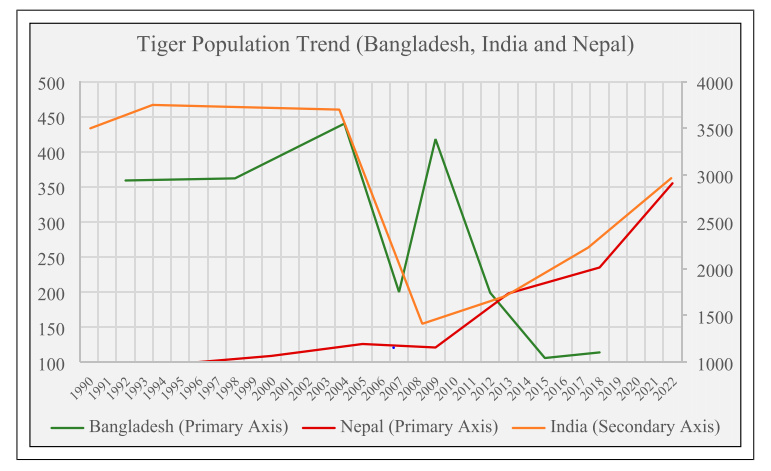Abstract:
 Background and Research Aims: The conservation of Bengal tigers is a global concern due to their exponential decline in population around the world. In 2010, all Tiger Range Countries (TRCs) committed to double their tiger population by 2022. As a member of the TRCs, Bangladesh has launched and conducted many tiger conservation projects with a heavy financial investment. However, the tiger population has not increased in the country. Therefore, there is an urgent need to investigate why those funded projects’ outcomes were unsatisfactory compared to neighboring countries such as India and Nepal.
Background and Research Aims: The conservation of Bengal tigers is a global concern due to their exponential decline in population around the world. In 2010, all Tiger Range Countries (TRCs) committed to double their tiger population by 2022. As a member of the TRCs, Bangladesh has launched and conducted many tiger conservation projects with a heavy financial investment. However, the tiger population has not increased in the country. Therefore, there is an urgent need to investigate why those funded projects’ outcomes were unsatisfactory compared to neighboring countries such as India and Nepal.
Methods: This review was conducted purely based on previous archival tiger conservation related documents. Six specific tiger conservation projects implemented in Bangladesh, India, and Nepal were selected to investigate the effectiveness of tiger conservation in Bangladesh. Allocated fund distributions were segmented into five groups: capacity building, planning policy and reports, infrastructural development, tiger–human conflict (THC) reduction, and in-field actions to increase the tiger population.
Results: The analysis showed that India and Nepal spent most of their budget on in-field activities and least on planning. A moderate amount was spent on THC reduction, capacity building, and infrastructural development. In contrast, Bangladesh spent the majority of its fund on planning. India and Nepal also developed a sustainable funding mechanism to reduce their dependency on donor agencies, which was absent in the case of Bangladesh.
Conclusion: It is recommended that future tiger conservation initiatives in Bangladesh should address more in-field action, such as patrolling to stop poaching and the illegal extraction of resources, sustainable long-term alternative income generation activities, and health issues such as identifying diseases, inbreeding effects, and captive breeding.
Implications for Conservation: Bangladesh needs to develop a sustainable long-term funding mechanism for in-field actions for tiger protection.

